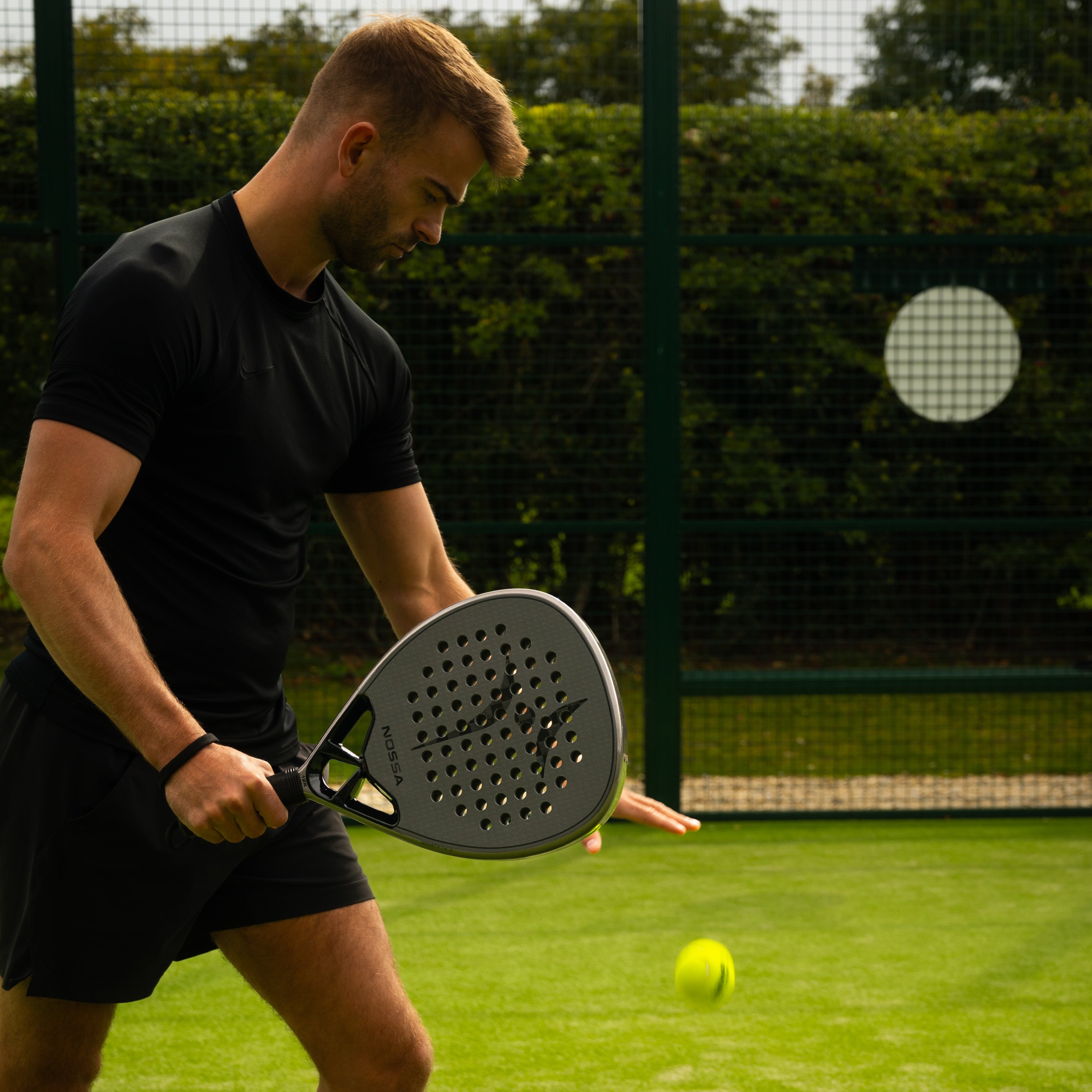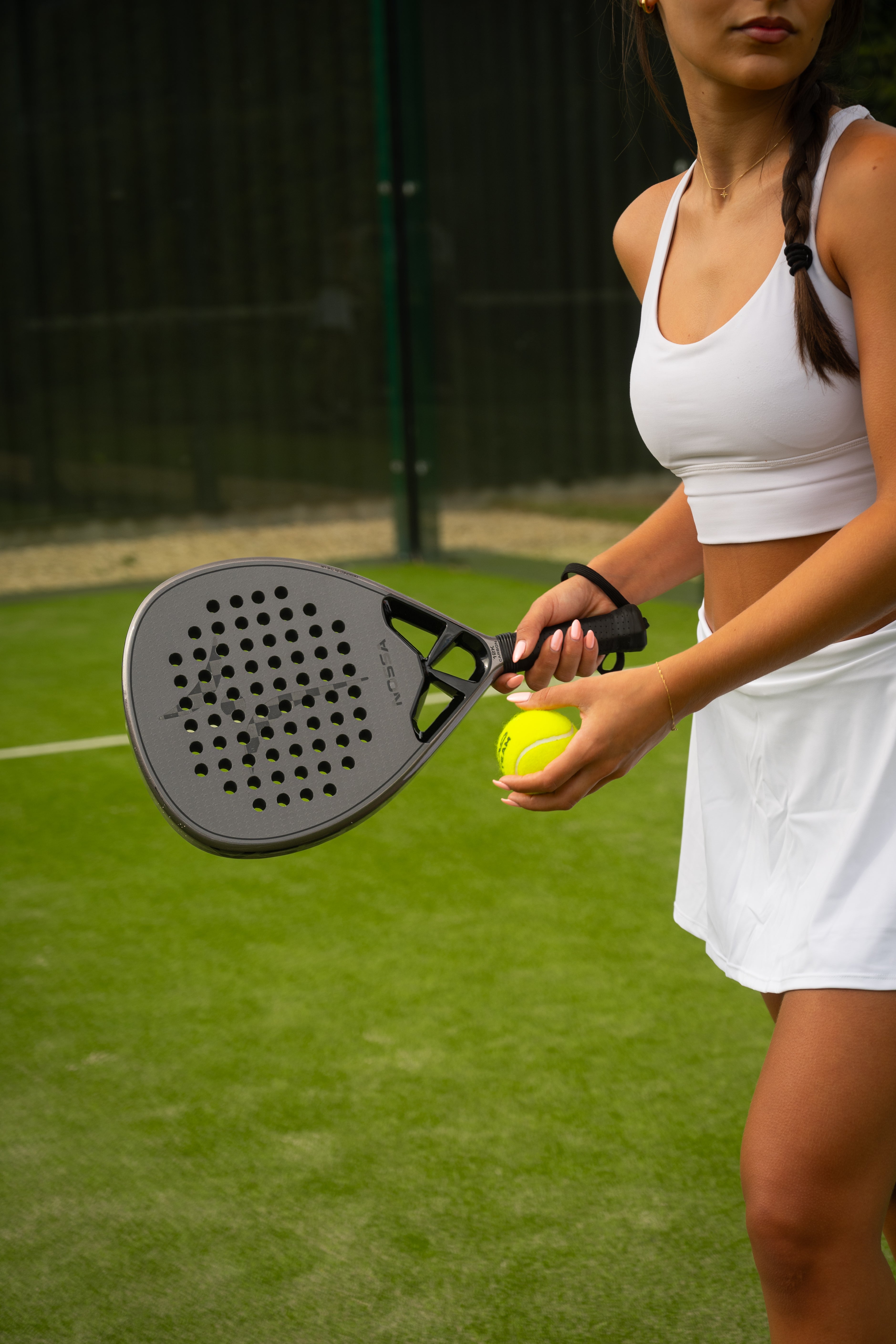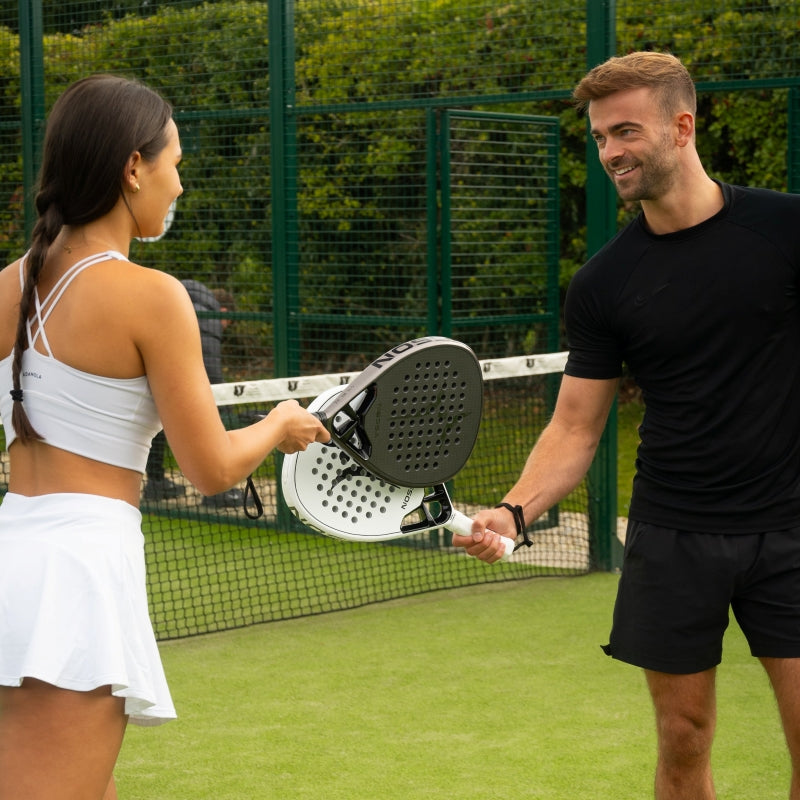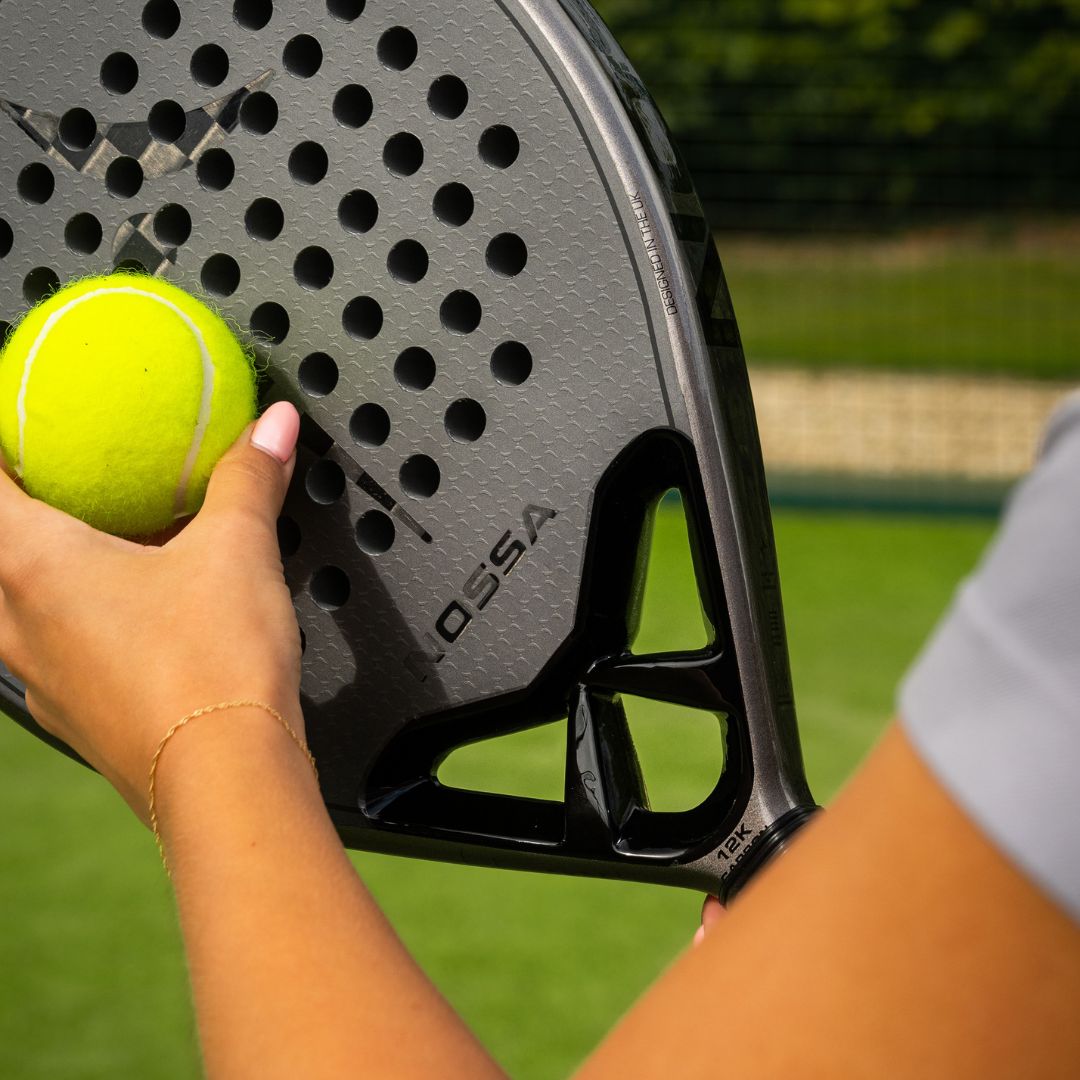New to padel? We’ve got you.
Rules, tips, gear guides, and everything in between.
NOSSA’s knowledge hub is built for players who want to get better—or just get started.
Fast Facts
What is padel?
Padel is a fast-paced racket sport that mixes elements of tennis and squash. It’s played on a smaller, enclosed court with glass walls, using solid paddles and a low-compression tennis ball.
How is it scored?
Just like tennis! Games go 15–30–40, and matches are usually best of 3 sets. You win a set by getting to 6 games with at least a 2-game lead.
Doubles vs singles
Padel is mostly played in doubles-four players on court-because the court size and gameplay are designed for teamwork. Singles exists, but it’s less common and played on a narrower court.
Why is it so popular?
It’s beginner-friendly, social, and addictive. You don’t need to be super fit or experienced to enjoy it, and it’s a great way to connect with friends, meet new people, and stay active- all while having fun.
Helpful resources to help players get started
Whether you’ve just booked your first court or you’re already hooked after a few sessions, here are some essential tips and resources to help you start strong and enjoy the game as you level up.

To start playing padel, you’ll need a racket—any style you’re comfortable with is fine for your first games. Wear lightweight, breathable sportswear, and bring a few padel balls. Optional extras like an overgrip, cap, or water bottle can make things more comfortable. The great thing about padel is how easy it is to get started—you don’t need a pile of gear on day one, just get on court and enjoy the game, adding to your kit as you go.

Walls are a huge part of padel—and a big learning curve for beginners. Start by letting the ball bounce off the back wall before hitting it, giving you more time to react. Pay attention to how the ball rebounds depending on speed and spin. Once you’re comfortable defensively, you can start using the walls to create smart, unexpected angles.

Since padel is usually played in doubles, good communication is key. Always call out who’s taking the shot to avoid collisions or hesitation. Move together as a unit—if one player shifts left, the other adjusts right. Check in between points and encourage each other. A synced team is much harder to beat than two individuals on the same side.

Beginners should focus on consistency, control, and learning to defend using the walls. At the intermediate level, players start incorporating lobs, volleys, and strategic shot placement. Advanced players read their opponents, control the pace of the game, and use advanced shots like bandejas, viboras, and chiquitas to dominate the court. Each stage builds on the last—so stay patient and enjoy the process.
To start playing padel, you’ll need a racket—any style you’re comfortable with is fine for your first games. Wear lightweight, breathable sportswear, and bring a few padel balls. Optional extras like an overgrip, cap, or water bottle can make things more comfortable. The great thing about padel is how easy it is to get started—you don’t need a pile of gear on day one, just get on court and enjoy the game, adding to your kit as you go.
Walls are a huge part of padel—and a big learning curve for beginners. Start by letting the ball bounce off the back wall before hitting it, giving you more time to react. Pay attention to how the ball rebounds depending on speed and spin. Once you’re comfortable defensively, you can start using the walls to create smart, unexpected angles.
Since padel is usually played in doubles, good communication is key. Always call out who’s taking the shot to avoid collisions or hesitation. Move together as a unit—if one player shifts left, the other adjusts right. Check in between points and encourage each other. A synced team is much harder to beat than two individuals on the same side.
Beginners should focus on consistency, control, and learning to defend using the walls. At the intermediate level, players start incorporating lobs, volleys, and strategic shot placement. Advanced players read their opponents, control the pace of the game, and use advanced shots like bandejas, viboras, and chiquitas to dominate the court. Each stage builds on the last—so stay patient and enjoy the process.




When you’re ready to level up, we’ve got your gear.
Explore the NOSSA Core RacketBlog posts

Built Where the Best Are Built
How We Found the Right Factory to Build the NOSSA Core When we set out to create the NOSSA Core, the goal wasn’t to make another padel racket — it was to make the right one. That meant finding a pr...

How to Warm Up for a Padel Match
Whether you're playing a friendly match or stepping into your first tournament, warming up properly can make a huge difference. It helps prevent injuries, sharpens your reactions, and gets your bod...

Best Shoes for Padel: What to Look for (And Why It Matters)
If you’re new to padel, you might think any pair of sneakers will do—but here’s the truth: your shoes can make or break your game. Padel involves quick direction changes, short sprints, and plenty ...
